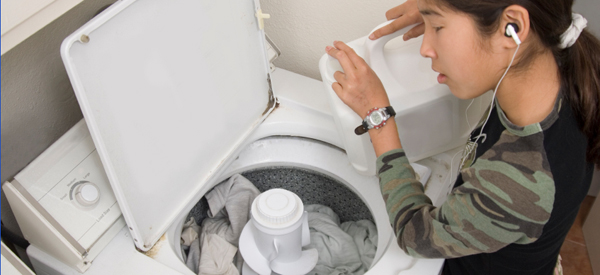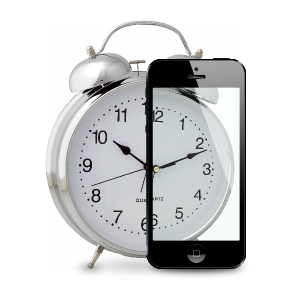
Parenting, Resources  Make it easier for your child with special needs to wash their hair by getting shampoo in a pump. Having shampoo in a pump avoids opening a slippery wet cap, figuring out how much shampoo you need and using both hands at the same time.
If you are having trouble finding shampoo in a pump at your local pharmacy or grocery store here are a couple of alternate options:
Use a Moisturizer Bottle
Convert an old moisturizer bottle that has a pump into a shampoo bottle. To avoid confusion on the part of your learner, you may want to cover the bottle's type with duct tape and relabel the bottle "Shampoo" with a Sharpee marker.
Get Your Own Shampoo Pumps
If you want the "real thing", head to a beauty supply outlet. Next time you get your hair washed at a hair salon, look at their shampoo bottles... for ease of use they almost always have pump bottles. Go to their suppliers. They'll probably charge you a few dollars for the pump itself but it's worth it.
Regardless of how you get your hands on a pump and bottle, hold onto them and use over and over again, Or in other words, lather, rinse and repeat!
Make it easier for your child with special needs to wash their hair by getting shampoo in a pump. Having shampoo in a pump avoids opening a slippery wet cap, figuring out how much shampoo you need and using both hands at the same time.
If you are having trouble finding shampoo in a pump at your local pharmacy or grocery store here are a couple of alternate options:
Use a Moisturizer Bottle
Convert an old moisturizer bottle that has a pump into a shampoo bottle. To avoid confusion on the part of your learner, you may want to cover the bottle's type with duct tape and relabel the bottle "Shampoo" with a Sharpee marker.
Get Your Own Shampoo Pumps
If you want the "real thing", head to a beauty supply outlet. Next time you get your hair washed at a hair salon, look at their shampoo bottles... for ease of use they almost always have pump bottles. Go to their suppliers. They'll probably charge you a few dollars for the pump itself but it's worth it.
Regardless of how you get your hands on a pump and bottle, hold onto them and use over and over again, Or in other words, lather, rinse and repeat!
Have your child spread jam, cream cheese or his spread of choice to a bagel or slice of bread. If knife safety is a concern, pre-slice bagels or buns, then return them to the bag so they are ready for your child to use all by himself without any worries that he'll hurt himself.
 Determine what your child can and cannot do himself, then plan what to teach accordingly. Once you assess what he is and is not able to do independently, you can then move forward and teach next steps in an order that makes sense for your learner.
An excellent tool to help you with your assessment and teaching is the brand new "Assessment of Functional Living Skills (AFLS). To learn more about the AFLS and how to teach life skills to people with special needs, read "Functional Skills For People On The Autism Spectrum – Why They Are Important and How To Teach Them". (While written for people with Autism, this article is also very applicable to those with other cognitive and developmental challenges.)
Determine what your child can and cannot do himself, then plan what to teach accordingly. Once you assess what he is and is not able to do independently, you can then move forward and teach next steps in an order that makes sense for your learner.
An excellent tool to help you with your assessment and teaching is the brand new "Assessment of Functional Living Skills (AFLS). To learn more about the AFLS and how to teach life skills to people with special needs, read "Functional Skills For People On The Autism Spectrum – Why They Are Important and How To Teach Them". (While written for people with Autism, this article is also very applicable to those with other cognitive and developmental challenges.)
Remind him of his tasks with some type of alarm. This way you can gradually fade yourself out of the picture with greater ease. For picture based reminder app check out PhotoMind or this complete list of reminders and schedulers.
For those learners who are up to picking out their own clothes and have an iPad, iPhone or iPod Touch, What Should I Wear and WhereThere are apps will help your child pick out clothes.
 Buy dishwasher detergent in capsule form rather than as powder. That way you eliminate the need to pour and measure. CAUTION: There are safety concerns with these capsules as they tend to look candy-like and are extremely hazardous if swallowed. Proceed with caution if you feel your child could be at risk of eating these.
Buy dishwasher detergent in capsule form rather than as powder. That way you eliminate the need to pour and measure. CAUTION: There are safety concerns with these capsules as they tend to look candy-like and are extremely hazardous if swallowed. Proceed with caution if you feel your child could be at risk of eating these.
Get your child accustomed to waking up with an alarm instead of by a person. This is an excellent first step towards a more independent morning routine. An alarm clock goes a long way toward promoting independence.
 Use labels and/or picture to indicate where things should go both on the insides and outside of cupboards so your learner has a reference as to where everything belongs and is able to clean up independently.
Use labels and/or picture to indicate where things should go both on the insides and outside of cupboards so your learner has a reference as to where everything belongs and is able to clean up independently.
14 Tips To Help Your Child With Special Needs Be Independant
While achieving complete independence may not be a realistic goal for many individuals who have special needs, "independence" should be considered a spectrum, just like many physical and developmental challenges themselves. Just because someone can't be completely self-sufficient (who really is?), doesn't mean he or she shouldn't strive for partial independence. Any task or undertaking that a person with any sort of disability can undertake by himself or herself is a huge step in the right direction! But how do we get there? Here are some small suggestions you can take that can make a big difference...1. Hair Washing With A Pump
 Make it easier for your child with special needs to wash their hair by getting shampoo in a pump. Having shampoo in a pump avoids opening a slippery wet cap, figuring out how much shampoo you need and using both hands at the same time.
If you are having trouble finding shampoo in a pump at your local pharmacy or grocery store here are a couple of alternate options:
Use a Moisturizer Bottle
Convert an old moisturizer bottle that has a pump into a shampoo bottle. To avoid confusion on the part of your learner, you may want to cover the bottle's type with duct tape and relabel the bottle "Shampoo" with a Sharpee marker.
Get Your Own Shampoo Pumps
If you want the "real thing", head to a beauty supply outlet. Next time you get your hair washed at a hair salon, look at their shampoo bottles... for ease of use they almost always have pump bottles. Go to their suppliers. They'll probably charge you a few dollars for the pump itself but it's worth it.
Regardless of how you get your hands on a pump and bottle, hold onto them and use over and over again, Or in other words, lather, rinse and repeat!
Make it easier for your child with special needs to wash their hair by getting shampoo in a pump. Having shampoo in a pump avoids opening a slippery wet cap, figuring out how much shampoo you need and using both hands at the same time.
If you are having trouble finding shampoo in a pump at your local pharmacy or grocery store here are a couple of alternate options:
Use a Moisturizer Bottle
Convert an old moisturizer bottle that has a pump into a shampoo bottle. To avoid confusion on the part of your learner, you may want to cover the bottle's type with duct tape and relabel the bottle "Shampoo" with a Sharpee marker.
Get Your Own Shampoo Pumps
If you want the "real thing", head to a beauty supply outlet. Next time you get your hair washed at a hair salon, look at their shampoo bottles... for ease of use they almost always have pump bottles. Go to their suppliers. They'll probably charge you a few dollars for the pump itself but it's worth it.
Regardless of how you get your hands on a pump and bottle, hold onto them and use over and over again, Or in other words, lather, rinse and repeat!
 2. Pre-Slice Bread or Buns
2. Pre-Slice Bread or Buns
Have your child spread jam, cream cheese or his spread of choice to a bagel or slice of bread. If knife safety is a concern, pre-slice bagels or buns, then return them to the bag so they are ready for your child to use all by himself without any worries that he'll hurt himself.
3. Remove Food Seals In Advance
Make sure that the seal on an orange juice bottle or container of yogurt is always off.4. Use Unbreakable Dishes
When a child is just starting to handle plates on their own make sure to use plastic or non-breakable dishes to prevent broken dishes and injury.5. Pre-Measure Laundry Detergent
Measuring detergent isn't easy. You have the same problem pouring as with a shampoo bottle, only in this situation, the bottle or box is a good three or four times bigger, heavier and more difficult to manipulate. The solution is to prepare pre-measured amounts of detergent in small plastic containers or baby jars. Again, the number of steps and level of difficulty is drastically reduced, thereby bringing yet one more household chore within reach.6. Assess Abilities And Make A Plan
 Determine what your child can and cannot do himself, then plan what to teach accordingly. Once you assess what he is and is not able to do independently, you can then move forward and teach next steps in an order that makes sense for your learner.
An excellent tool to help you with your assessment and teaching is the brand new "Assessment of Functional Living Skills (AFLS). To learn more about the AFLS and how to teach life skills to people with special needs, read "Functional Skills For People On The Autism Spectrum – Why They Are Important and How To Teach Them". (While written for people with Autism, this article is also very applicable to those with other cognitive and developmental challenges.)
Determine what your child can and cannot do himself, then plan what to teach accordingly. Once you assess what he is and is not able to do independently, you can then move forward and teach next steps in an order that makes sense for your learner.
An excellent tool to help you with your assessment and teaching is the brand new "Assessment of Functional Living Skills (AFLS). To learn more about the AFLS and how to teach life skills to people with special needs, read "Functional Skills For People On The Autism Spectrum – Why They Are Important and How To Teach Them". (While written for people with Autism, this article is also very applicable to those with other cognitive and developmental challenges.)
7. Keep the Same Schedule And Routine
When teaching a learner how to do something by himself, do it on the same day and at the same time. As humans, we are all creatures of habit. Use this to your learner's advantage. 8. Use a scheduler
8. Use a scheduler
Remind him of his tasks with some type of alarm. This way you can gradually fade yourself out of the picture with greater ease. For picture based reminder app check out PhotoMind or this complete list of reminders and schedulers.
9. Getting Dressed
The night before, lay out your child's clothes on a bench or dresser so they are ready for the next day. This is especially important for those who find it difficult to pick out appropriate clothing for the weather. 10. Help With Picking Clothes
10. Help With Picking Clothes
For those learners who are up to picking out their own clothes and have an iPad, iPhone or iPod Touch, What Should I Wear and WhereThere are apps will help your child pick out clothes.
11. Dish Washing
 Buy dishwasher detergent in capsule form rather than as powder. That way you eliminate the need to pour and measure. CAUTION: There are safety concerns with these capsules as they tend to look candy-like and are extremely hazardous if swallowed. Proceed with caution if you feel your child could be at risk of eating these.
Buy dishwasher detergent in capsule form rather than as powder. That way you eliminate the need to pour and measure. CAUTION: There are safety concerns with these capsules as they tend to look candy-like and are extremely hazardous if swallowed. Proceed with caution if you feel your child could be at risk of eating these.
 12. Morning Routine
12. Morning Routine
Get your child accustomed to waking up with an alarm instead of by a person. This is an excellent first step towards a more independent morning routine. An alarm clock goes a long way toward promoting independence.
13. Cleaning Up
 Use labels and/or picture to indicate where things should go both on the insides and outside of cupboards so your learner has a reference as to where everything belongs and is able to clean up independently.
Use labels and/or picture to indicate where things should go both on the insides and outside of cupboards so your learner has a reference as to where everything belongs and is able to clean up independently.



